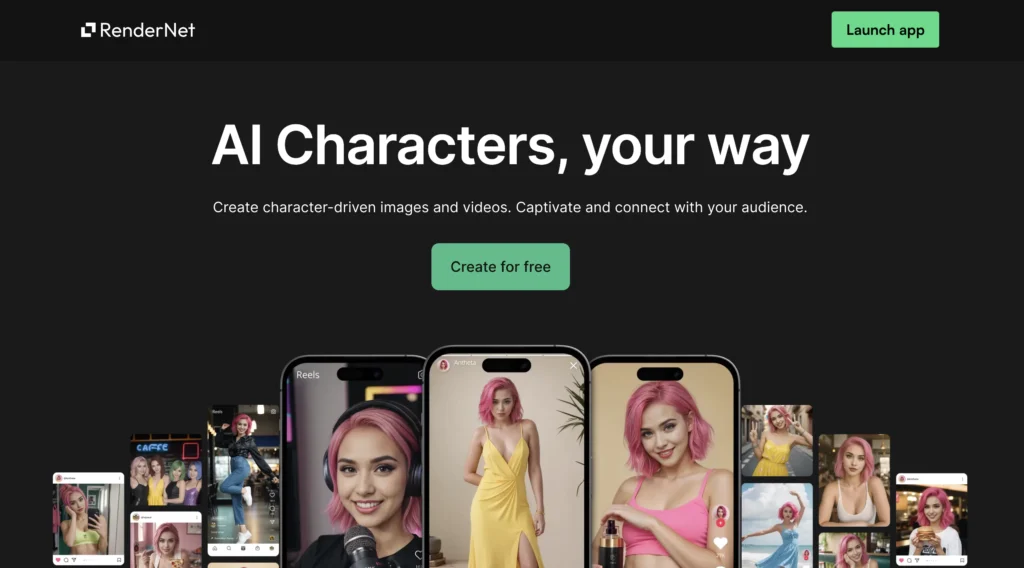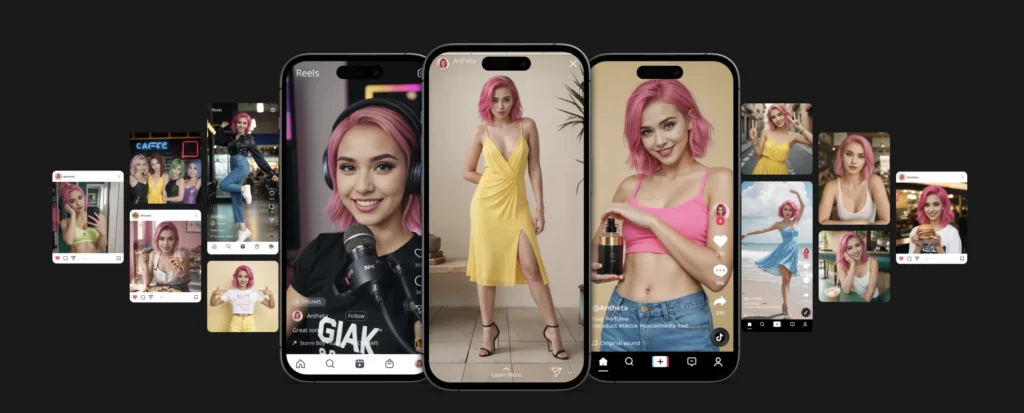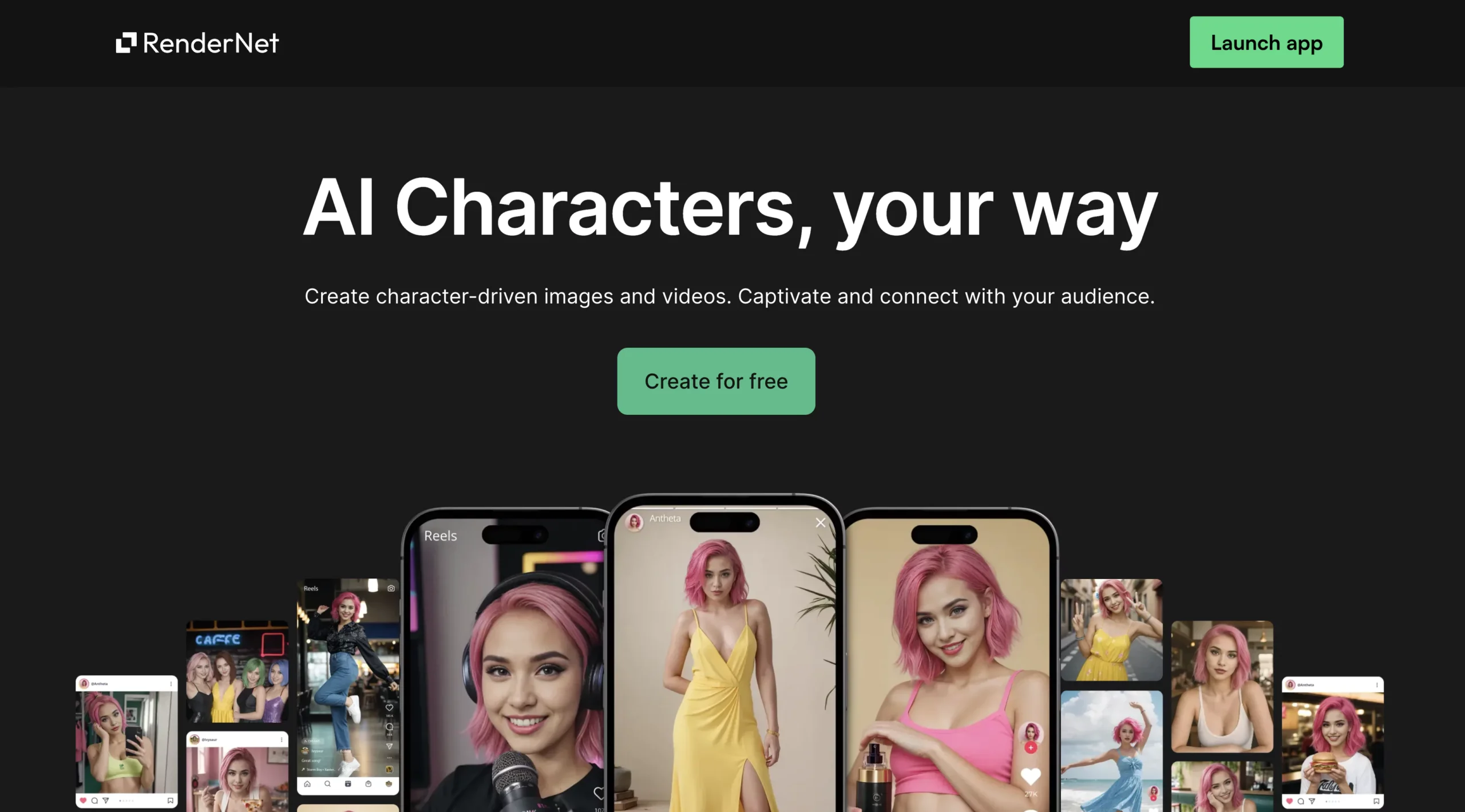AI Image Generators are used to bring your ideas to life. Are you searching for a text-to-image generator? Then you’ve landed on the right page.
I’ve used and tested RenderNet AI extensively to convert text into images. I’ve used these AI images in many projects. So you can use this AI generator too to crearte realistic AI Images.
RenderNet AI Image Generator: Create stunning images quickly with advanced AI, using super fast GPUs and diverse artistic style options.
Let’s start.
What is RenderNet AI AI Image Generator?
RenderNet AI is an AI tool designed to generate images and videos from text descriptions. Also you can build your unique character, and providing unparalleled control over character design, composition, and style.

My take on RenderNet AI:
Now you are familiar with the basic details of RenderNet AI. This will be the exciting part of this blog.
This RenderNet AI Image Generator is one of the best generators I have ever used. I tested this tool to generate images from text.
Here are the results I want to show you. Below are the images I have created by using this tool.


Let us start the process of how you can create similar images from text using RenderNet AI.
How to use RenderNet AI?
Step 1: Sign Up
Create an account on the RenderNet AI website by providing your email and setting up a password.
Step 2: Log In
Use your credentials to log into your RenderNet AI account.
Step 3: Choose a Template
Navigate to the template library and select a pre-designed template that fits your project needs.
Step 4: Customize Content
Edit the template by changing text, images, and other content according to your specifications.
Step 5: Adjust Settings
Modify any layout or style settings, such as colors, fonts, and spacing, to align with your branding.
Step 6: Preview Your Work
Use the preview feature to see how your project looks before finalizing it.
Step 7: Save Your Project
Save your progress to ensure no changes are lost. You can save it as a draft or finalize it.
Step 8: Export Your Project
Select the export option to download your finished project in the desired format (e.g., PDF, image file).
Step 9: Share or Publish
Share your project directly from RenderNet AI or publish it on your desired platforms.
Use Cases of RenderNet AI?
RenderNet AI can be applied in various scenarios to enhance efficiency and creativity:
1. Architectural Visualization: Generate photorealistic images of buildings and interiors before construction, helping architects and clients visualize projects.
2. Product Design: Create detailed 3D renderings of products for marketing, prototyping, or feedback, facilitating better design decisions.
3. Game Development: Produce high-quality textures and environments quickly, enabling game designers to focus on gameplay mechanics and narrative.
4. Advertising: Design eye-catching visual content for campaigns, utilizing rapid rendering capabilities to meet tight deadlines.
5. Film and Animation: Streamline visual effects creation and scene rendering, reducing production time and costs while maintaining high quality.
6. Virtual Reality and Augmented Reality: Enhance immersive experiences with realistic environments and objects, resulting in more engaging user interactions.
7. E-commerce: Generate realistic product images for online stores, improving customer engagement and reducing return rates.
8. Training Simulations: Create lifelike scenarios for training purposes across various industries, from healthcare to aviation, improving learning experiences.
9. Interior Design: Visualize design concepts with vivid detail, allowing clients to see potential outcomes and make informed decisions.
10. Urban Planning: Simulate city layouts and infrastructure development, providing planners with visual tools to communicate proposals effectively.
These use cases demonstrate RenderNet AI’s versatility across industries, enhancing creative processes and decision-making.
RenderNet AI Key Features:
Advanced Rendering Algorithms – Utilize cutting-edge algorithms to produce high-quality visuals with photographic realism.
Real-time Collaboration – Enables multiple users to collaborate in real-time, streamlining the design process and enhancing communication.
AI-driven Asset Optimization – Automatically optimize 3D assets to balance quality and performance, reducing rendering times without sacrificing detail.
Custom Shader Creation – Provides tools for users to design and implement custom shaders, allowing for greater artistic control over materials and effects.
Cross-platform Compatibility – Seamlessly integrates with various design software and platforms, ensuring flexibility and ease of use across different workflows.
Machine Learning Enhancements – Leverages machine learning to continually improve rendering speeds and visual output based on user preferences and historical data.
Virtual Reality Integration – Supports VR environments, enabling users to visualize and modify their projects in immersive settings.
User-friendly Interface – Designed with an intuitive interface, making it accessible for both novice and professional users to easily navigate and utilize features.
Extensive Asset Library – Offers a vast library of pre-built models and materials, allowing users to quickly populate scenes without starting from scratch.
Batch Processing Capabilities – Allows users to render multiple projects simultaneously, significantly increasing productivity and efficiency in project completion.
Pros and Cons:
Pros
– Fast rendering
– User-friendly interface
– High-quality output
– Flexible pricing
– Cloud-based access
Cons
– Limited features
– Subscription costs
– Rendering limitations
– Internet dependency
– Learning curve
RenderNet AI Pricing:
RenderNet AI offers a freemium pricing model, which allows users to access basic functionalities of the platform for free. This approach enables individuals and businesses to experiment with RenderNet’s AI capabilities without any financial commitment.
For those requiring advanced features, higher usage limits, or additional services, premium subscription plans are available at varying price points.
This tiered pricing model makes RenderNet accessible to a wide range of users, from casual creators to professional enterprises, ensuring that everyone can find a plan that meets their needs.
Related FAQs:
Q: What is RenderNet AI?
A: RenderNet AI is an advanced platform designed to streamline and enhance the rendering process in various digital projects, using AI for improved efficiency and quality.
Q: What types of projects can benefit from RenderNet AI?
A: RenderNet AI is suitable for various projects, including 3D animations, architectural visualizations, video games, and virtual reality environments.
Q: How does RenderNet AI improve rendering speed?
A: RenderNet AI employs machine learning algorithms to optimize rendering tasks, allowing for faster processing times without compromising on quality.
Q: Is RenderNet AI user-friendly for beginners?
A: Yes, RenderNet AI is designed with an intuitive interface, making it accessible for users of all skill levels, including beginners.
